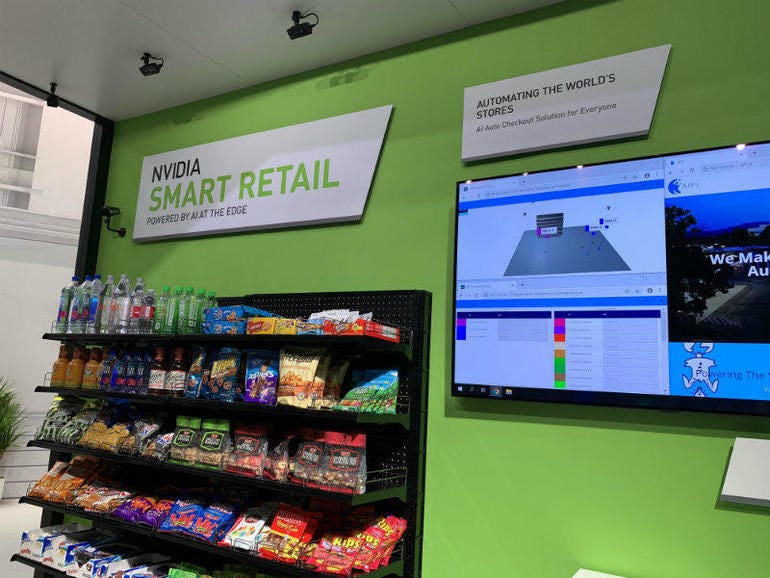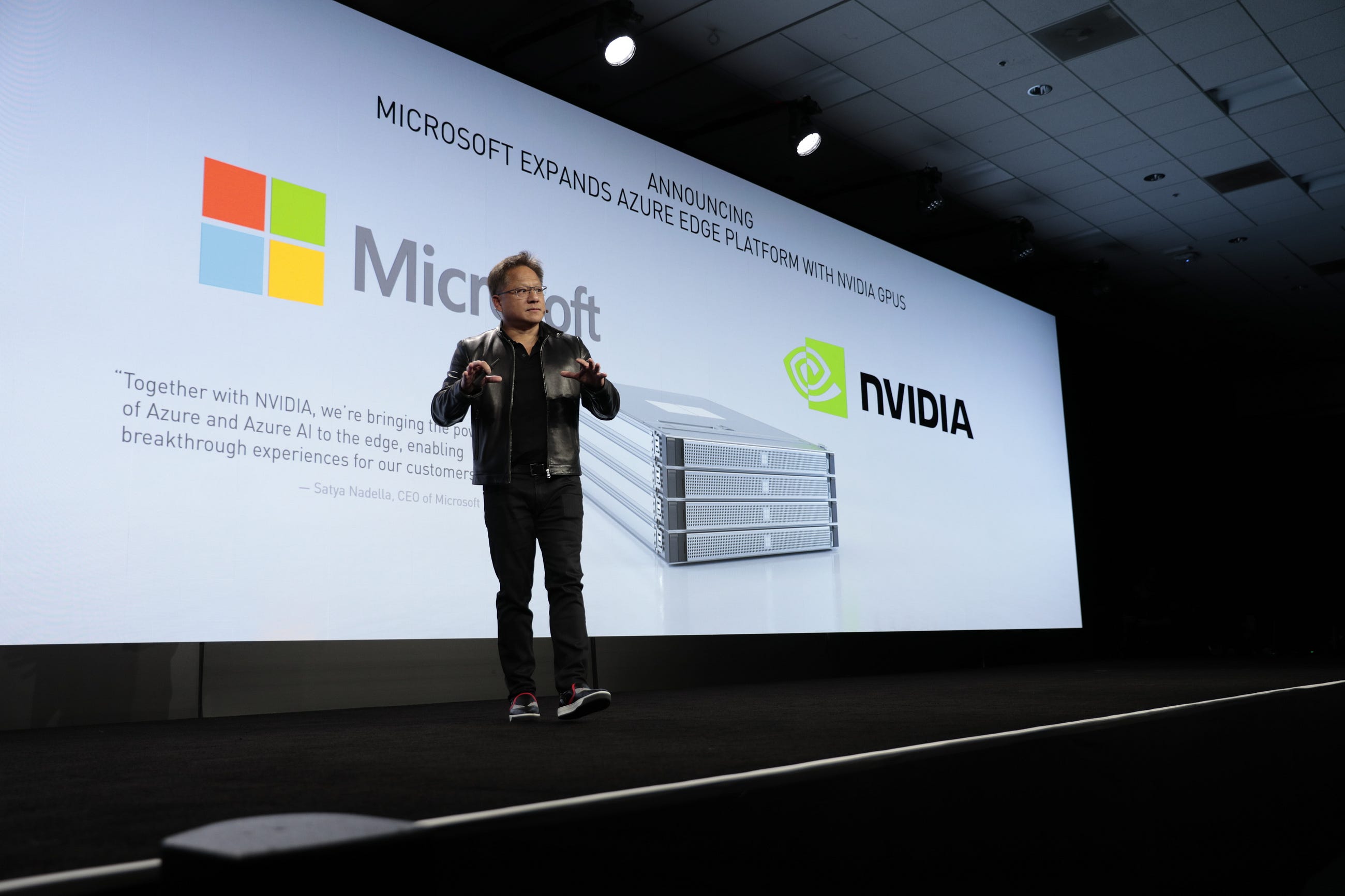Contents
 (Source: https://www.iwsinc.com/events/2019/mobile-world-congress-americas-in-los-angeles-october-22-29-2019/)
(Source: https://www.iwsinc.com/events/2019/mobile-world-congress-americas-in-los-angeles-october-22-29-2019/)
Mobile World Congress 2019: The Latest AI Advancements
A review of some of the latest AI advancements from the 2019 Los Angeles Mobile World Congress.
Introduction
This October, I had the opportunity to attend the Mobile World Congress 2019 in Los Angeles. In this article, I will provide an overview of some of the latest AI announcements and how the 5G network is going to be used in order to empower AI-powered applications.
5G AI-Powered Applications
NVIDIA EGX
One of the most important announcements made by NVIDIA at the Mobile World Congress is EGX (Edge Computing Platform). EGX is a high-performance, cloud-native platform designed to let companies rapidly stream data from remote locations at low latency. Many companies have already decided to make use of this platform, some examples are: Walmart, Samsung and BMW.
“We’ve entered a new era, where billions of always-on IoT sensors will be connected by 5G and processed by AI”
— Jensen Huang, NVIDIA CEO
EGX was made possible thanks to the combination of three main technologies: Artificial Intelligence, the Internet of Things and 5G.
- Internet of Things: Smart devices are nowadays becoming more and more common. IoT is commonly used by industries to harness data remotely and make smart decisions using the gathered information. One of the main problems of using IoT devices in industrial applications has always been the need to fast capture, process and transmit data in real-time. If any of these 3 requirements can’t be met, then our IoT devices would not be able to quickly respond to changes in the environment and report anomalies back to the Cloud. If you are interested in finding out more in details about how IoT devices works, additional information are available here.
- Artificial Intelligence: AI is used in IoT devices to process the gathered data. The captured data can be of many different forms depending on the applications. Some examples are: time series data, camera recording and anomaly detection. In IoT applications, it then becomes really important to make the best use of memory and processing power needed to run our AI models. Therefore, depending on the application, it can be possible to perform our AI data processing either locally (if there are privacy-related concerns) or on the Cloud (enabling us to make use of more advanced AI models).
- 5G: Finally, 5G can now enable us to consistently speed up the communication between our IoT devices and the Cloud. This can, therefore, enable us to run more sophisticated applications on the Cloud such as online gaming and Augmented/Virtual reality powered applications.
One of the application examples provided by NVIDIA at the Mobile World Congress was Smart Retail (Figure 1). In this example, a network of cameras is used to keep track in real-time of which items a customer picks to buy while shopping, consistently speeding up customer retail experience.

Figure 1: NVIDIA Smart Retail [1]
Additionally, NVIDIA also announced a new collaboration with Microsoft for intelligent edge computing by integrating Microsoft Azure services with NVIDIA EGX (Figure 2).
“Together with NVIDIA, we’re bringing the power of Azure and Azure AI to the edge, enabling breakthrough experiences for our customers.”
— Satya Nadella, Microsoft CEO
If you are interested in finding out more about Microsoft AI-powered tools, more information are available here.

Figure 2: NVIDIA CEO Jensen Huang 2019 Keynote
Virtual Reality Data Visualization
Data Visualization is a really important step to perform when analyzing vast amounts of data. Some of the main benefits of performing data visualization are:
- It can help us to gain a deep understanding of the dynamics underlying our data distribution.
- Having a deep understanding of our data can help us building better Machine Learning models.
- Creating charts summaries can make easier for others to understand our data investigation.
At the mobile world congress, different companies launched Virtual Reality (VR) powered Data Visualization tools (eg. Virtualitics and BadVR). In fact, thanks to 5G, it will now be easier to even live stream heavy data VR applications.
Virtual Reality creates a completely artificial environment in which the user gets fully immersed. Using VR to visualize datasets could potentially lead to enhanced customer experience and a better understanding of dataset features (especially for medical applications such as protein folding).
In particular, Virtualitics can also be integrated with Jupyter Notebooks using their Python API (as shown in the video below), making possible for everyone to create AR Data Visualization charts.
Video 1: Virtualitics Python API [2]
If you are looking for an introduction on AR/VR programming, you can find more information about it in this my previous article.
I hope you enjoyed this article, thank you for reading!
Bibliography
[1] TechRepublic, NVIDIA’s smart retail experience — Macy Bayern. Accessed at: https://www.techrepublic.com/pictures/photos-everything-cool-at-mwc19-los-angeles/15/
[2] Virtualitics — Python API, VirtualiticsVR. Accessed at: https://www.youtube.com/watch?v=Hf6TlLfjZRA
Contacts
If you want to keep updated with my latest articles and projects follow me on Medium and subscribe to my mailing list. These are some of my contacts details:
